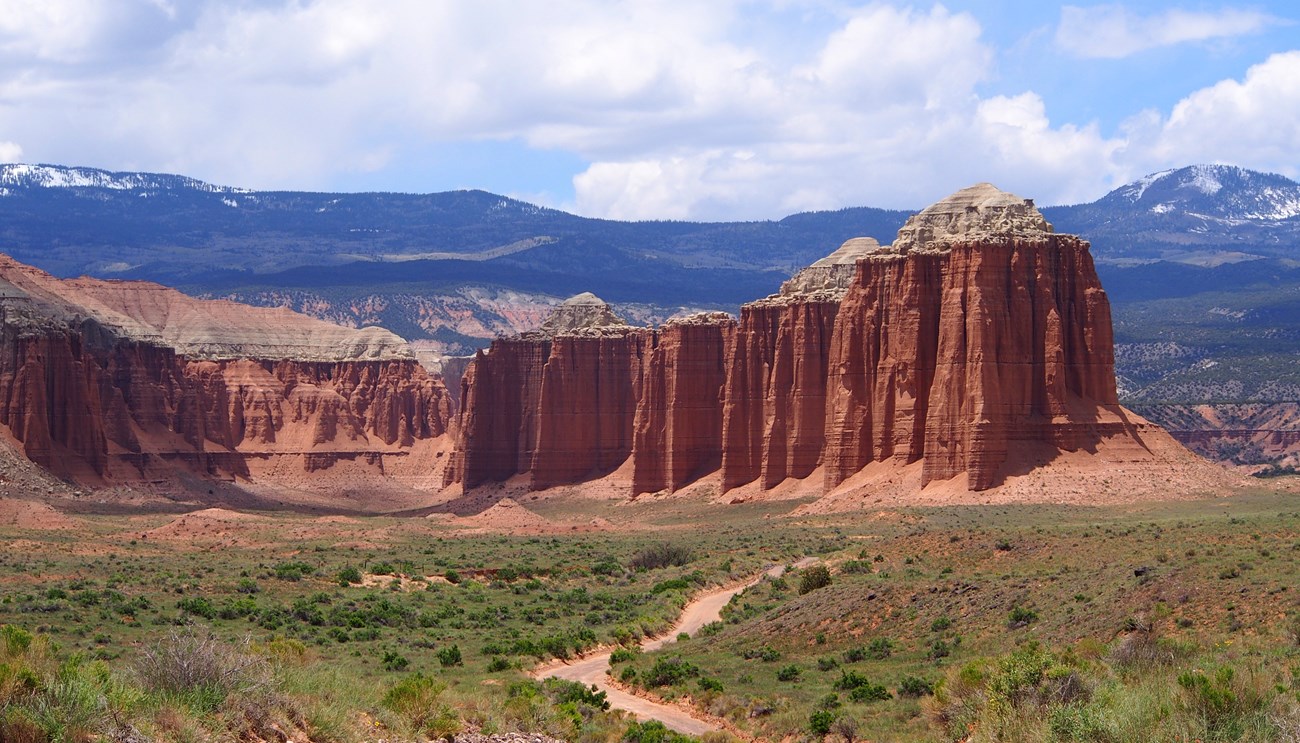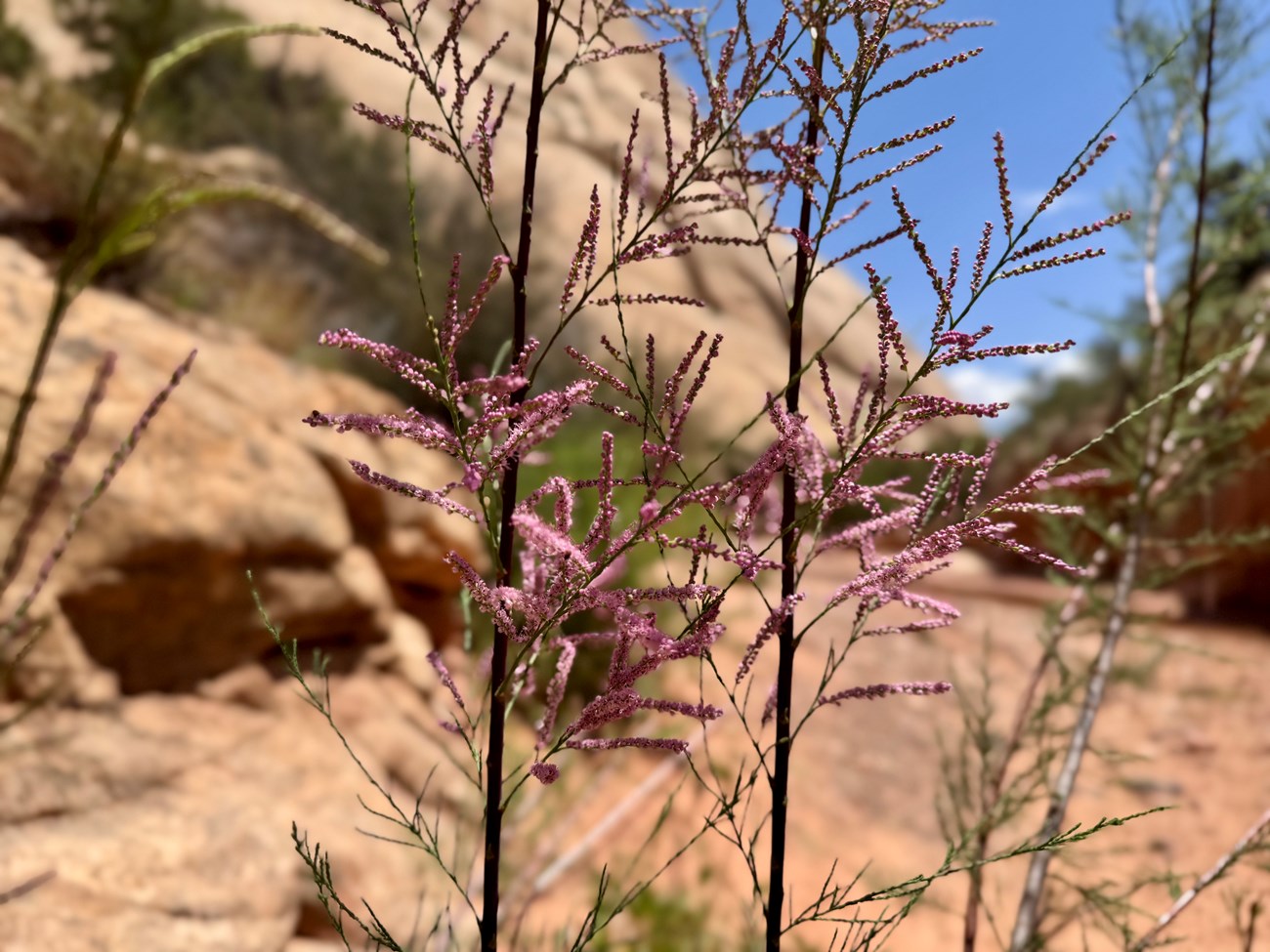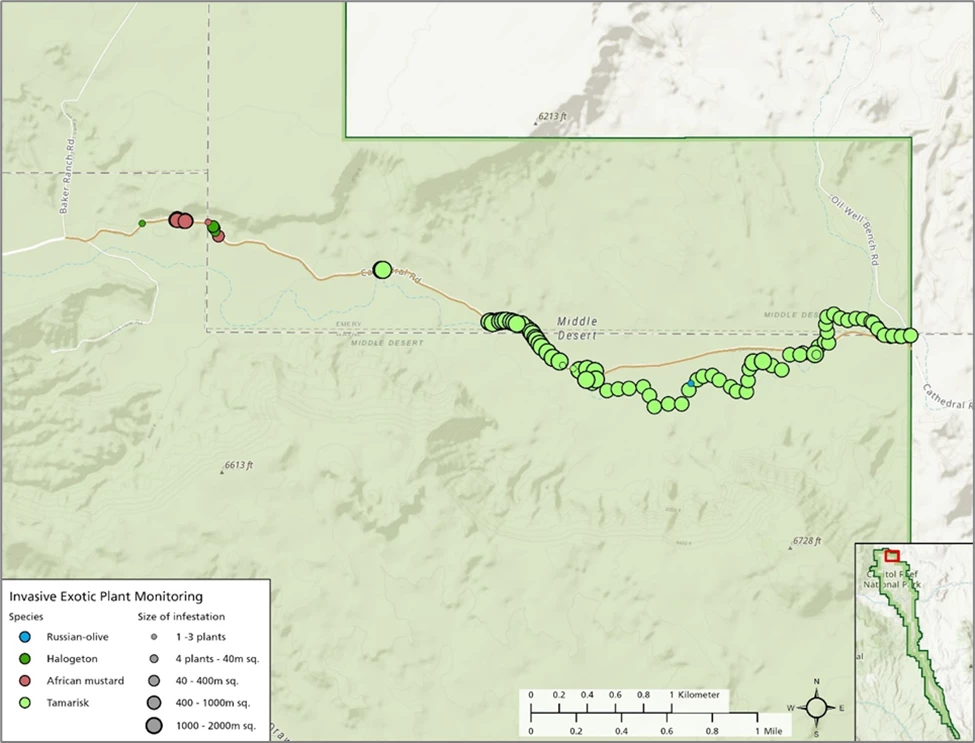Last updated: August 1, 2025
Article
Invasive Exotic Plant Monitoring at Capitol Reef National Park: 2024 Field Season

NPS/Amy Washuta
Why Monitoring Matters
At a Glance
- 102 infestations of 4 priority species were detected along Cathedral Valley Road in 2024.
- Tamarisk was the most common species, with 86 patches recorded.
- African mustard, halogeton, and Russian olive were found in low numbers and are recommended for immediate control.
- Russian thistle was widespread and found in nearly all transects.
Invasive exotic plants (IEPs)—plants that are not native and can quickly spread in new areas—are growing across Capitol Reef National Park (NP). Species like tamarisk (Tamarix sp.) and Russian thistle (Salsola sp.) can push out native vegetation, harm wildlife habitat, and reduce the quality of visitor experiences. These plants disrupt ecosystems and cause problems such as fewer pollinators or less plant diversity. Monitoring IEPs helps park managers focus control efforts, protect native species, and keep the landscape healthy. This update highlights current trends, high-risk areas, and ongoing challenges.
What We Found
In 2024, crews recorded 102 patches of 4 priority invasive plant species along 13.5 km (8.4 miles) of the Cathedral Valley Road monitoring route (Table 1). Tamarisk was by far the most widespread species, representing over 84% of all priority infestations. African mustard (Malcolmia africana), halogeton (Halogeton glomeratus), and Russian olive (Elaeagnus angustifolia) were also recorded but in much lower numbers. Most infestations were in the 400–1,000 m² size class.
| Species | Common Name | Total Infestations | No Size Class Recorded | 1 to 3 Plants | 3 Plants–40 m² | 40– 400 m² |
400– 1000 m² |
>1000 m² |
|---|---|---|---|---|---|---|---|---|
| Elaeagnus angustifolia | Russian-olive | 1 | 1 | 0 | 0 | 0 | 0 | 0 |
| Halogeton glomeratus | halogeton | 7 | 1 | 0 | 1 | 1 | 4 | 0 |
| Malcolmia africana | African mustard | 8 | 1 | 0 | 1 | 2 | 4 | 0 |
| Tamarix sp. | tamarisk | 86 | 2 | 0 | 1 | 0 | 51 | 32 |
| Priority Species, Total | – | 102 | 5 | 0 | 3 | 3 | 59 | 32 |
What’s a “transect”?
A transect is a straight line along which scientists stop at regular intervals to record plant and soil data.Trends varied by species and location. Tamarisk increased across the Cathedral Valley Road monitoring route (Figure 1). Russian thistle was widespread (detected in transects) and continued a steady increase since 2012. African mustard and halogeton were detected in low numbers but may expand rapidly if unmanaged.

NPS/Amy Washuta
How We Collected the Data
What’s a “quadrat”?
A quadrat is a small square frame used to closely examine and measure the plants and ground cover in a specific spot.Crews surveyed the Cathedral Valley Road monitoring route on May 24, 2024, covering 13.5 kilometers (Figure 2). They recorded invasive plant locations, species, and patch sizes. Observers were trained to recognize 31 priority invasive species, which makes presence and absence data for these species reliable within the surveyed area. Teams walked the entire route and documented all visible infestations within a 10-meter-wide area. Quadrats were placed at set intervals along transects to estimate plant cover and soil characteristics.

NPS/Aneth Wight
Crews used consistent methods to estimate detection probabilities for priority species. This helps ensure accurate, repeatable results across survey years and observers.
What Comes Next
Park managers can use these findings to better detect, manage, and prevent the spread of invasive plants at Capitol Reef National Park. Tamarisk remains the most widespread priority species and will require long-term, landscape-scale strategies; because plants are scattered across a large area and many are fully grown, controlling them will be difficult. African mustard, halogeton, and Russian olive were found in small numbers and are still limited in where they grow—making them good candidates for quick action before they spread. Russian thistle has steadily increased since 2012 and is now common. Checking high-risk areas will help track changes and focus control efforts where they’re needed most.
Information in this article was summarized from Invasive exotic plant monitoring at Capitol Reef National Park: 2024 field season by D. Perkins. Content was edited and formatted for the web by E. Rendleman.
